Wax carving advent calendars?Wax carving advent calendars?
How do I set up a jewellery bench at home?
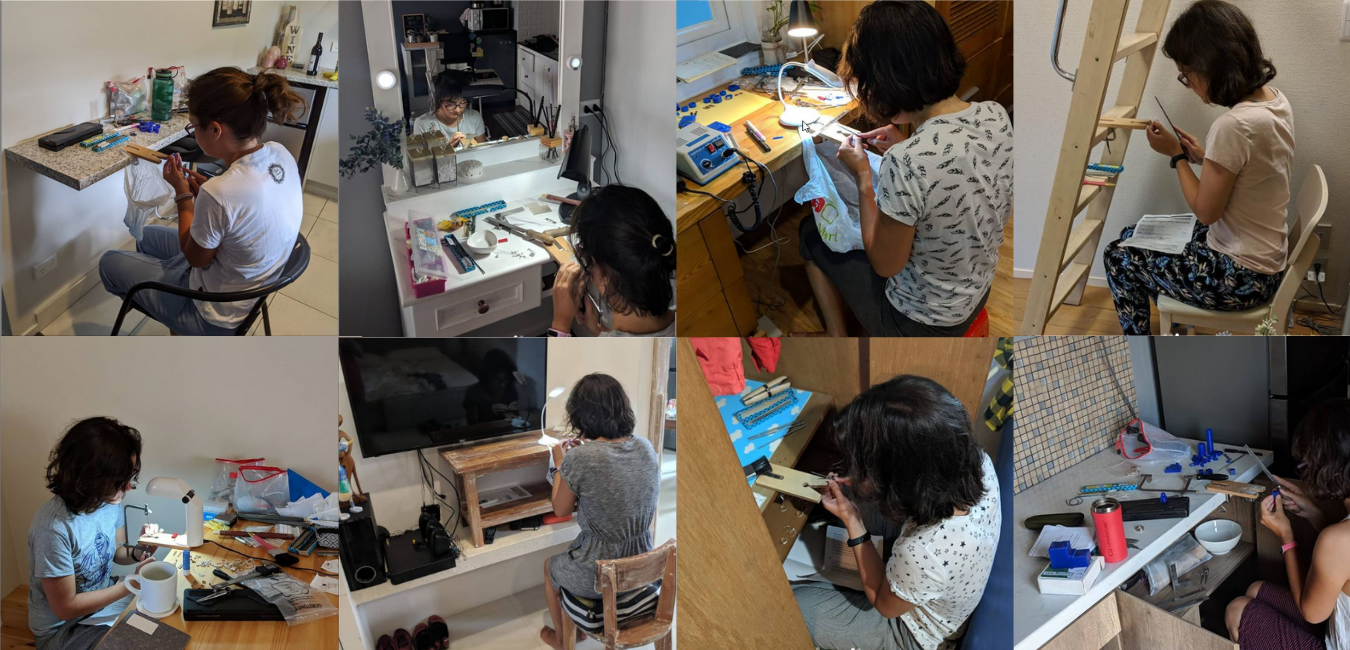
Are you thinking of setting up a jewellery bench at home, but don’t know where to start? Have a look at these bench ideas made from surfaces found in every home. There might be something that can work for you!
Any surface can be a jewellery bench
2018-2020 I spent travelling through Asia. Even though it was a dream to get to travel, I didn’t want to give up jewellery completely. Between my clothes, I managed to pack some essential hand tools, pieces of silver and wax. Any time we stayed somewhere for more than a week, I would take my tools out and make.
I made benches from nightstands, closets, ladders and kitchen counters. You really don’t need much when you’re starting out, just get creative. As long as you have a clamp-on bench peg, you can set up your bench anywhere. And when you’re done, remove the peg and use the space for its intended purpose.
What surface makes a good bench?
I have 2 main criteria for what a good bench surface is.
Height: jewellery benches are higher than regular tables and desks. Just using the dinner table is going to hurt your back eventually.
Stability: you don’t want your bench to vibrate and move with every file stroke. You want something solid that absorbs the movements.
So here are some ideas for you to set up a bench at home, using regular household surfaces.
Kitchen counters
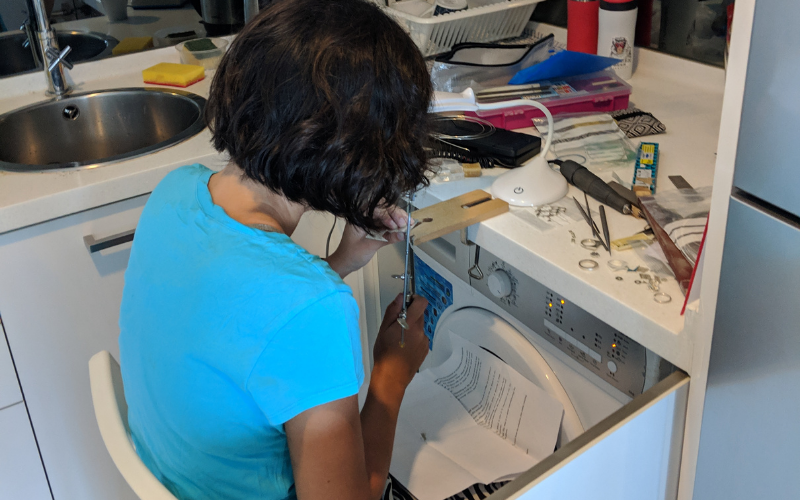
They’re a bit higher than regular tables and desks, which makes it more comfortable to work. Your legs go in the cabinet (or jammed against the washing machine) and you can work away for a few hours before you get too uncomfortable. They’re VERY stable. Of all the things I’ve tried, this is my favourite, together with the next one.
Breakfast bars
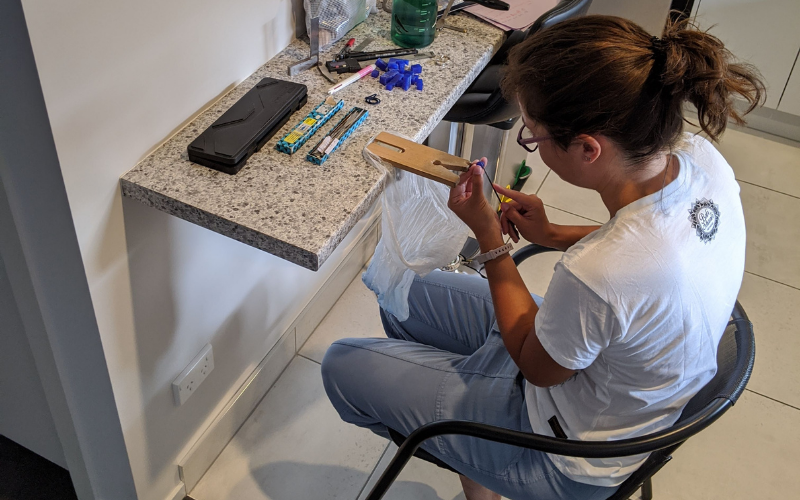
These are very similar to kitchen counters. Usually they're even a bit higher! If you use a regular chair (not a barstool), they can be a good working height. And if the bar is attached to either the kitchen or the wall, it’s going to be really stable as well.
Shelf
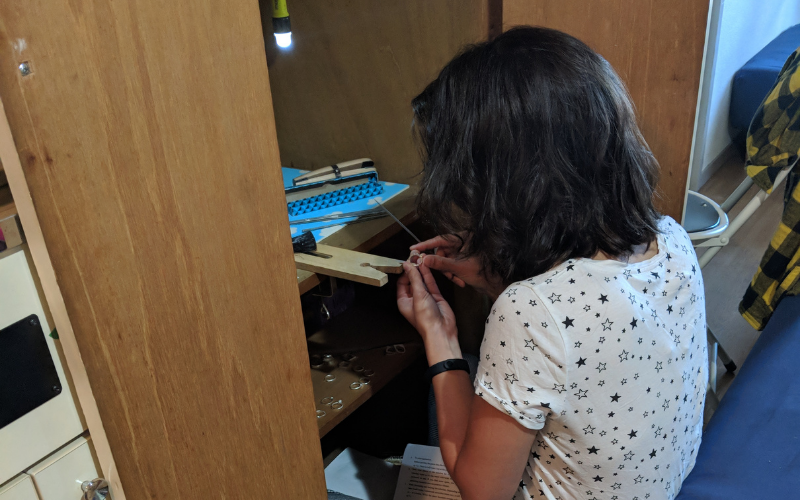
You might get lucky and find a shelf in your closet that is the correct height to work. Or if possible, move a shelf to make it the correct height? Maybe there is a good shelf in your bookcase or you have just a single shelf?
These benches aren’t always very stable. Make sure that there is nothing on a higher shelf that can fall from all the vibrations and land on your head (learned this the hard way!). You also want to make sure you can bring lights in there because it tends to be dark.
Regular table/desk
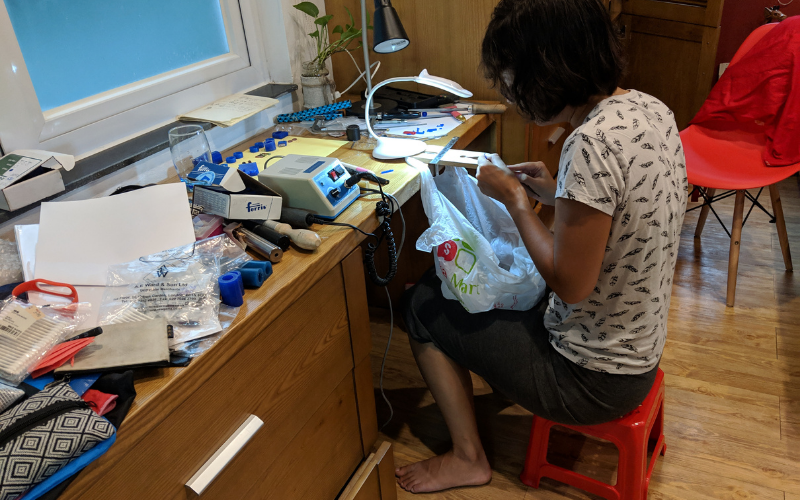
These can work if you find some alternative seating. Kids chair, step stool, nightstand or coffee table. Anything lower than a regular chair that can make the table a better working height for you. You can probably get a few hours of work in before it gets too uncomfortable.
Alternatively, you could look for something to place under the table legs to raise the height of the table. These benches aren’t always very stable. It depends on how stable your table or desk is in the first place.
Miscellaneous
If you like sitting on the floor, you could try a coffee table or nightstand. I’ve never been able to keep this up for a long time and these aren’t always very stable either.
Have a look in your house and see if there’s anything you can make work. And really get creative!
Maybe there is something you can stack on top of each other to make it work?
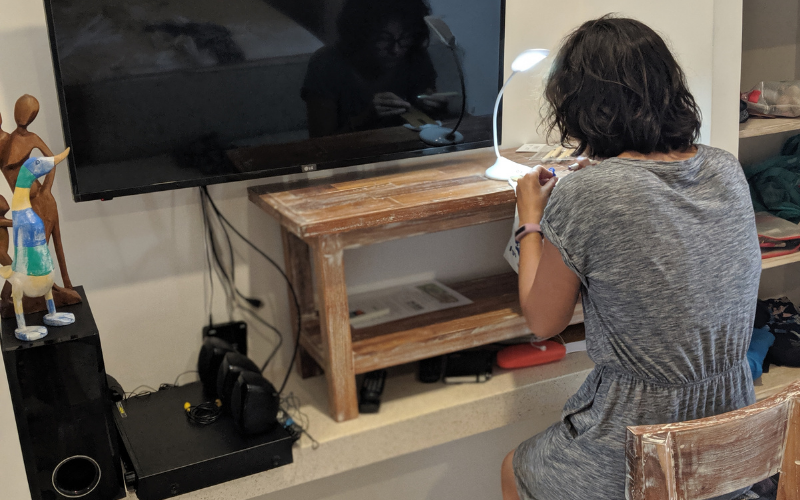
Or if you’re only doing some filing, maybe a super slim surface will be enough?
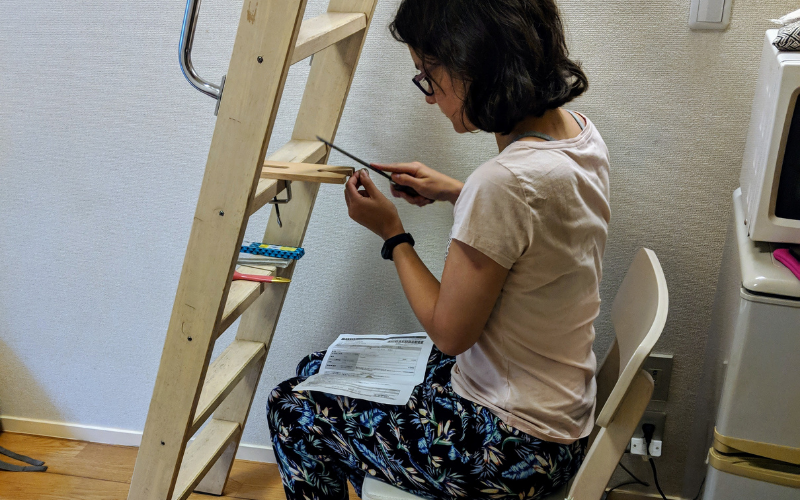
Catch tray
To save all my lemel and offcuts, I made a catch tray as well.
If you look at the photos again, you’ll see I use 2 different catch trays.
Plastic bag: for wax, I would hang a plastic bag from the peg. And try my best to have the majority of wax dust and offcuts land in there. This only worked so-so and I would still need to vacuum around the bench after.
I always keep the bigger pieces for later use, but the small bits and dust I throw away. Having it all land in a plastic bag already, makes throwing it away easier.
Sheet of paper: for metal, I would have a sheet of paper on my lap and make sure I was directly under the peg. This worked pretty well, although some lemel still ended up on the floor. When I was done, I would tip the contents of the paper into my lemel container. (I fold the paper once before use. The groove in the middle of the paper makes it easier to sweep the lemel into its container.)
The paper works, but I do think a serving tray will work better. It has a bigger surface so you’ll catch more.
Will you try one?
Leave a comment to let me know if you’re trying one of these benches and how it works for you! Or let me know if I’ve missed a perfect bench surface found in the house. I’m always looking for new ideas.